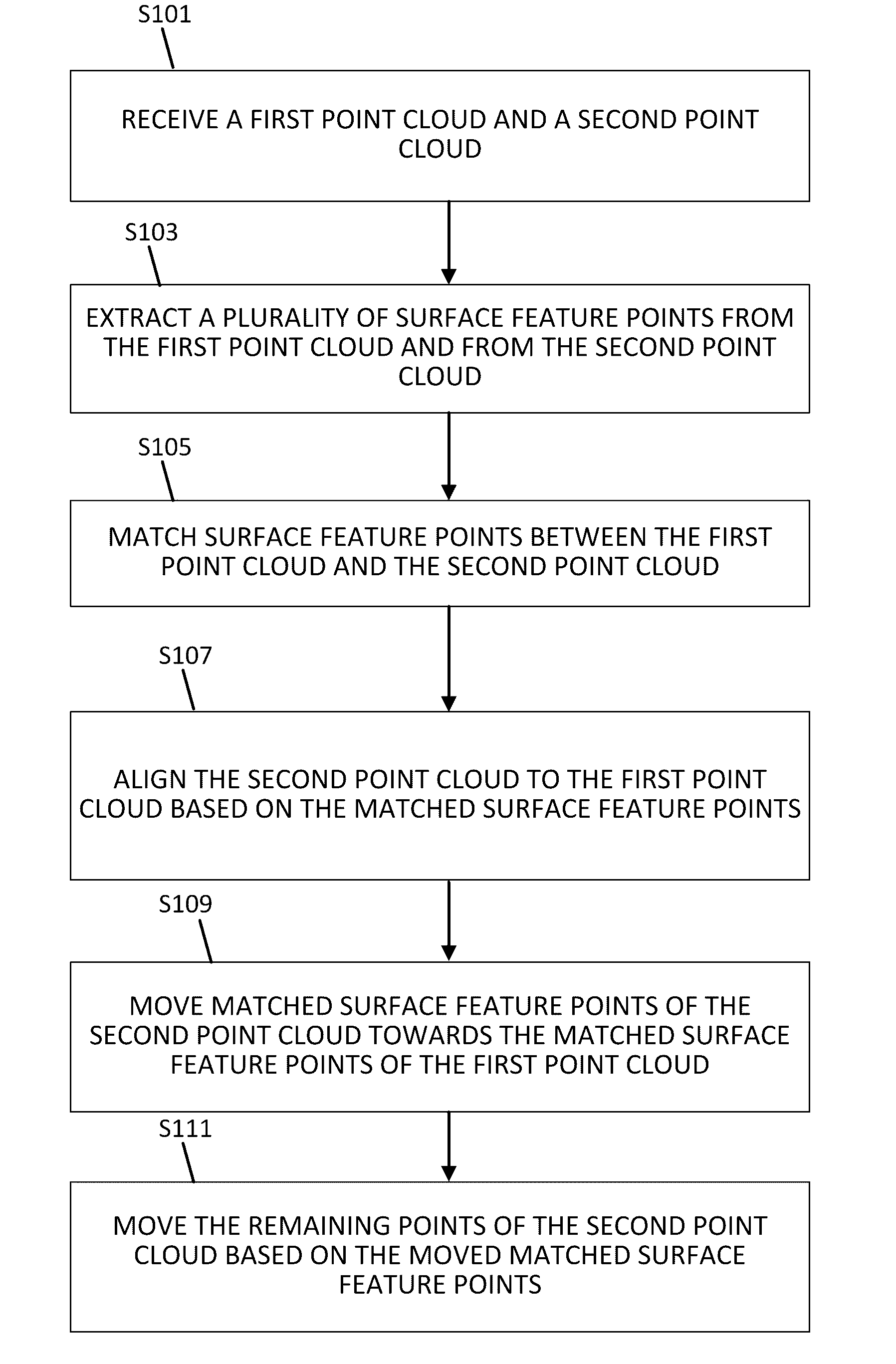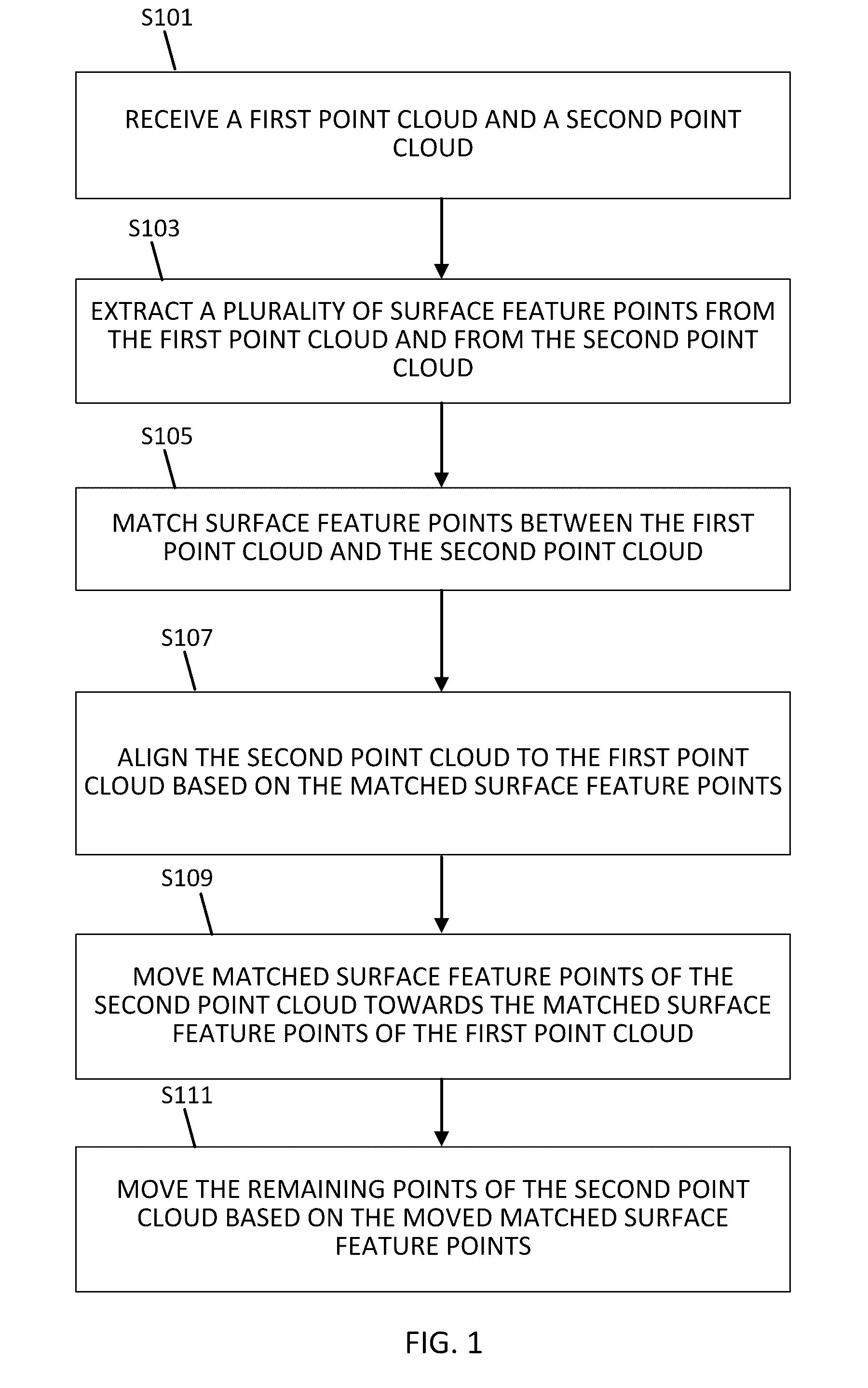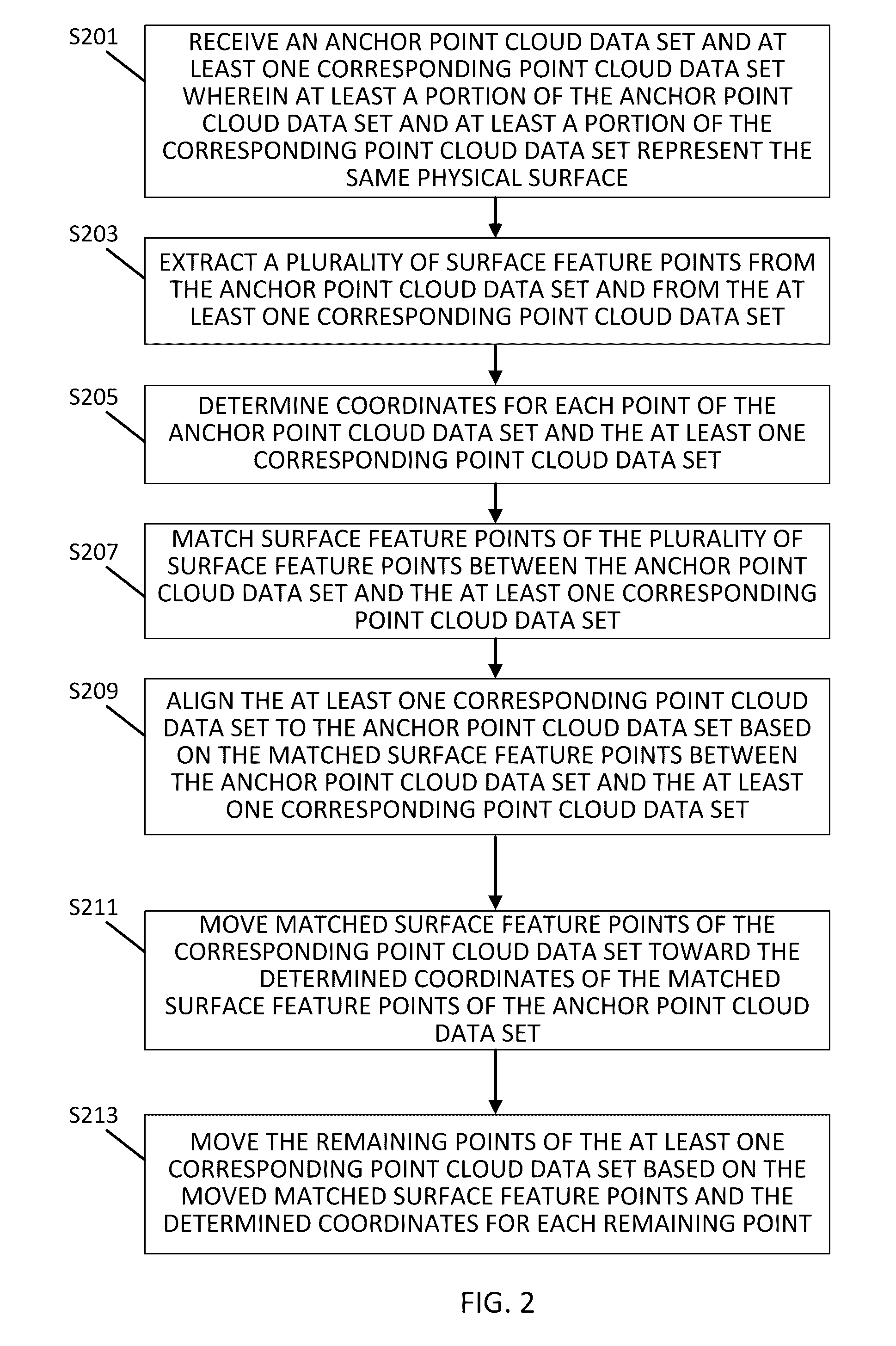Non-Rigid Registration for Large-Scale Space-Time 3D Point Cloud Alignment
a space-time, non-rigid technology, applied in image enhancement, instruments, image data processing, etc., can solve the problems of non-linear distortion, large errors in misalignment and inaccurate registration, and registration errors when aligning scans
- Summary
- Abstract
- Description
- Claims
- Application Information
AI Technical Summary
Benefits of technology
Problems solved by technology
Method used
Image
Examples
Embodiment Construction
[0015]Multiple three-dimensional scans of the same geographic area or physical object are used in map navigation and urban planning. These scans may be collected at different times: within minutes, days, or years between the scan. Scans that are collected with the aid of a vehicle may have offsets of several meters due to variations in driving. Artifacts may appear in the scans as non-rigid distortions due to the system drift or due to calibration error.
[0016]The subject technology for non-rigid alignment addresses the alignment of multiple point cloud data scans into a common coordinate plane for point cloud data sets of the same geographic area and effectively resolves non-rigid distortion. One goal of the subject technology for non-rigid alignment is to improve data registration accuracy in the presence of non-rigid distortion. A further goal is to conduct non-rigid transformations on large data sets without exceeding the computational capabilities of a system. Yet another goal o...
PUM
 Login to View More
Login to View More Abstract
Description
Claims
Application Information
 Login to View More
Login to View More - R&D
- Intellectual Property
- Life Sciences
- Materials
- Tech Scout
- Unparalleled Data Quality
- Higher Quality Content
- 60% Fewer Hallucinations
Browse by: Latest US Patents, China's latest patents, Technical Efficacy Thesaurus, Application Domain, Technology Topic, Popular Technical Reports.
© 2025 PatSnap. All rights reserved.Legal|Privacy policy|Modern Slavery Act Transparency Statement|Sitemap|About US| Contact US: help@patsnap.com



